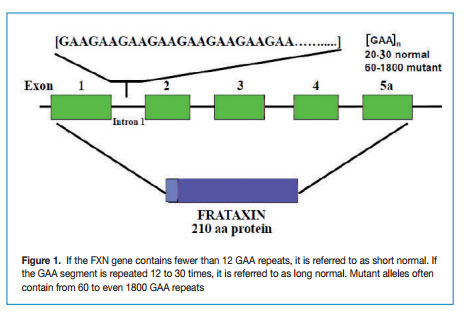Atherosclerotic Cardiovascular Disease
Professor Albert Cilia-Vincenti MD FRCPath
Pathogenesis, Diagnosis & Management Update
Hardening of the arteries” and its serious complications have been studied for well over a hundred years. The following is an outline of recent advances in our understanding of its causation, progression, diagnosis and some aspects of management.
Despite effective blood pressure and cholesterol-lowering drugs, atherosclerotic cardiovascular disease remains the major morbidity and mortality causation in developed countries. The disease-causing lesions originate from benign-looking, non-occlusive, lipid-laden plaques in childhood (fatty streaks) on the internal surface of arteries. These progress to enlarged plaques (atheromas) characterised by accumulation of lipids, chronic inflammatory cells, connective tissue and an overlying fibrous plaque. Their progression leads to stenosis or occlusion of small and medium-sized arteries.
Atherosclerotic plaques are also described in terms of complexity and resultant instability. Complexity depends on the degree of inflammatory cell infiltration, lipid deposition, calcification and intraplaque haemorrhage. Such complex plaques are unstable and prone to rupture. There is therefore an inflammatory mechanism to plaque instability. Plaque rupture exposes the thrombogenic atheromatous core which leads to sudden thrombotic occlusion of small to medium-sized arteries, such as coronary ones, with familiar serious consequences of unstable angina, myocardial infarction, or sudden death. Stable atherosclerotic lesions are slow-growing, less complex and have dense fibrous caps. They allow a collateral circulation time to develop, are less likely to rupture and are therefore less threatening.
Aortic atherosclerotic plaques are mainly confined to its abdominal portion. The aortic lumen is too wide for ruptured plaques to cause aortic thrombotic occlusion, but they may weaken the arterial wall and cause abdominal aortic aneurysm. Intermittent showers of tiny thrombi from ruptured aortic plaques are likely to end up in renal and leg skin arterioles, eventually leading to renal failure and lower limb ischaemic problems.
Atherosclerosis is now recognised to be fundamentally an inflammatory disease. The inciting event is dysfunction of the arterial inner lining cells (endothelium), leading to inflammatory cell infiltration and release of proinflammatory cytokines within the arterial wall. Low density lipoproteins (LDL) are thought to be more likely to be trapped in the lesion when oxidised. Smooth muscle cells of the arterial wall are triggered to migrate into the plaque and to produce a collagen-rich matrix and a fibrous plaque.
Cardiovascular risk factors promote atherosclerosis by damaging the endothelium – the latter is involved in regulating vascular tone, inflammation and thrombosis. Healthy endothelium releases nitric oxide (NO) to induce vasodilatation in response to, say, platelet aggregation.1 NO also reduces expression of adhesion molecules to prevent macrophage infiltration, and dampens vascular smooth muscle cell proliferation.1 These are protective mechanisms against atherosclerosis. Cardiovascular risk factors such as smoking, hypertension, diabetes, obesity and hypercholesterolaemia induce endothelial dysfunction through mechanisms such as free radical oxidation, haemodynamic strain and genetic pathways.1 Dysfunctional endothelial cells (EC) acquire a proinflammatory phenotype, expressing chemokine receptors, decreasing NO production, and dysregulating cytoskeletal and junctional proteins.2,3
A non-invasive ultrasound-based test of endothelial-dependent vasomotion, termed “flow-mediated dilatation”, measures brachial artery diameter change and has been used to detect early endothelial dysfunction.2 However, it requires highly trained operators, expensive equipment, and minimisation of environmental and physiological influences.
One can biochemically assess EC dysfunction with use of EC markers. Many candidates, such as NO, inflammatory cytokines, adhesion molecules, thrombosis regulators and markers of endothelial repair have been assessed, but have not proven to be clinically viable.2 Endothelial microparticles (EMP), which are small vesicles released during cell activation or injury, are elevated in patients with atherosclerosis.2 Since EMPs can be quantified, they are promising candidates for clinical testing.
Lipids within atheromatous plaques are susceptible to oxidation by several enzymes. Oxidised LDLs (oxLDL) are cytotoxic to arterial endothelium. Macrophages migrate from the bloodstream towards accumulated lipid in plaques and take up LDLs to degrade them, but oxLDL are resistant to degradation. Diets deficient in antioxidant vitamins and minerals may therefore accelerate oxLDL accumulation in plaques and atheromatous progression.
Besides reducing LDL concentrations by blocking cholesterol synthesis, statins also inhibit inflammatory pathways and increase NO production, which enhance endothelial protection.4 They also lower cytokine production and inhibit recruitment, migration and cell adhesion to endothelium.4 The role of high density lipoproteins (HDL) on atherosclerosis has received major attention. Torcetrapib, a cholesteryl ester transfer protein inhibitor, increases HDL and decreases LDL cholesterol levels but does not significantly reduce coronary atheroma volume.5 Another recent approach involves synthesizing fusion proteins of oxLDL binding receptors and the Fc domains of immunoglobulins.6 Zeibig et al7 created a soluble dimeric fusion protein Fc-CD68 capable of specific high-affinity binding with oxLDL in atherosclerotic plaques, reducing oxLDL uptake. This compound reduced lipid deposition by one third and aortic plaque extension by nearly 50%.
References
1. Vanhoutte PM. Endothelial dysfunction; the first step toward coronary atherosclerosis. Circ J 2009; 73: 595-601.
2. Deanfield JE, Halcox JP, Rabelink TJ. Endothelial function and dysfunction: testing and clinical relevance. Circulation 2007; 115: 1285-95.
3. Sima AV, Stancu CS, Simionescu M. Vascular endothelium in atherosclerosis. Cell Tissue Res 2009; 335: 191-203.
4. Biasucci LM, Biasotto G, Stefanelli A. Inflammatory markers, cholesterol and statins: pathophysiological role and clinical importance. Clin Chem Lab Med 2010; 48: 1685-91
5. Nissen SE, Tardif JC, Nicholls SJ et al. Effect of Torcetrapib on the progression of coronary atherosclerosis. N Engl J Med 2007; 356: 1304-16.
6. Ornish D. The Spectrum 2007. Ballantine Books, USA.
7. Zeibig S, Li Z, Wagner S et al. Effect of the oxLDL binding protein Fc-CD68 on plaque extension and vulnerability in atherosclerosis. Circ Res 2011; 108: 695-703.


